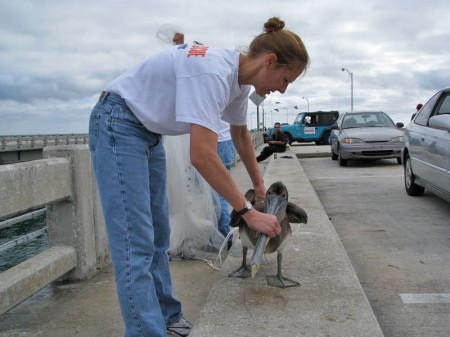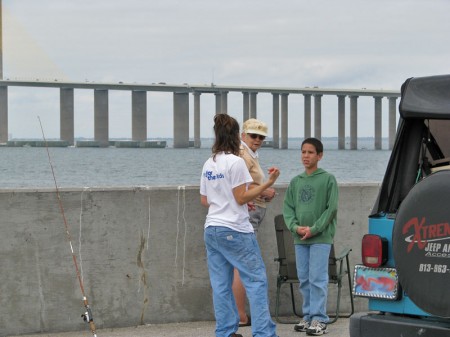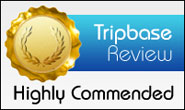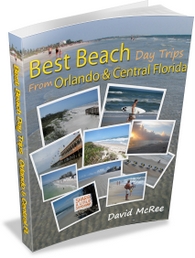I’ve just made my first bird rescue trip. Liz Vreeland, a local bird rescue volunteer, invited me to spend the day on the Skyway Bridge State Park Fishing Pier to see for myself what a serious problem exists on the pier, and what she and others are trying to do about it.
The problem is that birds, especially Brown Pelicans, are after the same fish and are occupying the same space that the fishermen are. The Pelicans, which are extremely friendly birds, are attracted by the fishermens’ bait and by their catch.
Pelicans, of course, don’t understand hooks, and don’t always see the monofilament line that stretches from the bridge to the water, directly in their flight path. Many Pelicans become entangled in line, and get gored by fish hooks. It is not at all unusual to see a Pelican fly by with 20 feet of line, a heavy lead sinker, and colorful float hanging from its wings and body.
When the Pelican flies to the mangrove islands to roost at night, the line becomes entangled in the branches and the Pelican is tied to the tree until it dies of dehydration and exhaustion. Not a pretty sight.
We rescued about 6 or 7 Pelicans (I lost count), but there were many more that we were unable to reach. Some had very serious injuries. All the Pelicans we rescued had more than one injury as well as signs of older injuries in various stages of healing or infection.
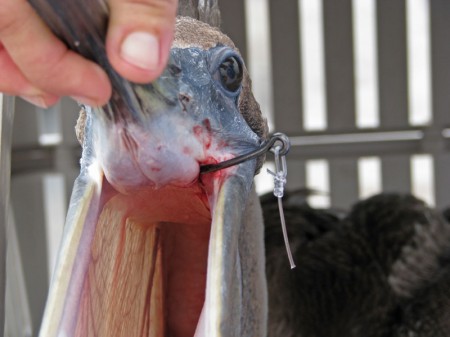
This Pelican had to go to the hospital. The hook was too big and dangerously positioned to be removed in the field.

Liz and Stacey work to remove a hook from a Pelican. Stacey is a new volunteer with the Suncoast Seabird Sanctuary and seems to be a natural at helping the birds.
When fishermen hook a Pelican and then cut the line, it is often quite difficult to catch the bird. But Liz is an expert and has extreme patience. Sometimes the hooks can be removed and the bird released right away if it appears otherwise healthy. Expert bird rescuers are trained to know the difference between a healthy bird and one that needs treatment before it can be released.
Sometimes the hook is too deep, is embedded in bone, or has caused a tissue injury severe enough to require treatment at a wild bird hospital.
Not only does Liz do volunteer rescue work for both the Suncoast Seabird Sanctuary and Save our Seabirds, she also works as a volunteer in the Suncoast Seabird Sanctuary wild bird hospital, so she has a lot of hands-on experience in evaluating and treating injured wild birds.
I fished a lot as a child and teenager. Never hooked a bird. What I discovered on this trip surprised me. Some of the fishermen simply had very little regard for the birds. Some even seemed to think it quite entertaining to hook and injure a bird. While many birds are hooked very much by accident, I am convinced that if some fishermen took more care, many bird injuries could be avoided.
On a brighter note, we also encountered MANY fishermen who were extremely helpful and concerned about the birds and were quick to notify us when a bird was hooked or when an injured bird was spotted. Some are learning how to properly free a hooked bird and determine if it needs further treatment.
Much of what Liz does involves educating people about what to do to help an injured bird. She spends a lot of time doing that between bird rescues.
I’ll be writing a series of posts on bird rescue efforts. Look for some video clips coming soon showing how the birds are captured, evaluated, and treated in the field.
It was an exciting day and I’ll be going back soon for more.
Note: Injured birds were transported to the Suncoast Seabird Sanctuary (Indian Shores) and Save Our Seabirds (Sarasota) for treatment, rehabilitation, and release back into the wild. Various bird rescue organizations and volunteers cooperate to manage the large amount of injured birds that need treatment.

